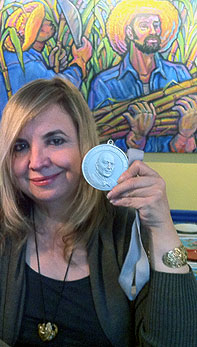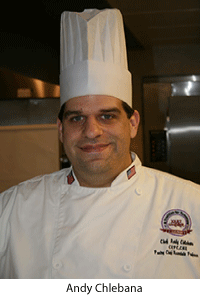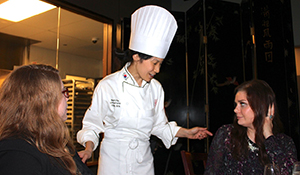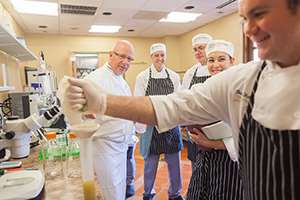Guest Speaker: Education Is Power
Monday, 28 July 2014 17:19
 And with power comes responsibility, says this Hoboken chef, restaurateur, author, businesswoman and Latin cuisines historian.
And with power comes responsibility, says this Hoboken chef, restaurateur, author, businesswoman and Latin cuisines historian.
Dr. Maricel E. Presilla, a culinary historian, author and chef specializing in the foods of Latin America and Spain, reminded graduates of The Culinary Institute of America (CIA) they are following a tradition of excellence, and with it carries responsibility. Presilla was commencement speaker at the college’s Hyde Park, N.Y., campus on July 3.
“Keep your sharp knives at hand, but hold onto the wooden spoon,” Presilla told 61 recipients of associate degrees in culinary arts and baking and pastry arts. “A wooden spoon becomes one with the food. It also represents the collective wisdom of grandmothers and home cooks everywhere.”
Presilla is president of Gran Cacao Company, a Latin American food research and marketing company that offers cacao educational programs and premium heirloom cocoa beans. She is also chef and co-owner of two restaurants—Cucharamama, featuring artisanal South American cooking, and Zafra, a pan-Latin restaurant with an emphasis on the cuisine of Cuba, both in Hoboken, N.J. In 2010, she opened Ultramarinos,a gourmet Latin American market, bakery, chocolate shop and cooking atelier in Hoboken.

 Pastry-chef instructors from Joliet Junior College, SAIT Polytechnic and The Pennsylvania School of Culinary Arts hope to become the 12th, 13th and 14th CMPCs in the United States.
Pastry-chef instructors from Joliet Junior College, SAIT Polytechnic and The Pennsylvania School of Culinary Arts hope to become the 12th, 13th and 14th CMPCs in the United States. “How are you today?”, though arguably better than nothing, is so overused and insincere that it fails to distinguish the service culture of your retail foodservice outlets. To employ an effective interaction strategy (and increase sales), understand that customers respond on conscious and unconscious levels to every aspect of their engagement with your instructors and student employees.
“How are you today?”, though arguably better than nothing, is so overused and insincere that it fails to distinguish the service culture of your retail foodservice outlets. To employ an effective interaction strategy (and increase sales), understand that customers respond on conscious and unconscious levels to every aspect of their engagement with your instructors and student employees. In the candy and chips aisles, Sriracha is undoubtedly the pepper of the year, as evidenced at the Sweets & Snacks Expo in May. And “free from” claims reign supreme in this industry. A foremost food-trends expert surveys the landscape of cross-over flavor demands between the snack shop and restaurant.
In the candy and chips aisles, Sriracha is undoubtedly the pepper of the year, as evidenced at the Sweets & Snacks Expo in May. And “free from” claims reign supreme in this industry. A foremost food-trends expert surveys the landscape of cross-over flavor demands between the snack shop and restaurant. Since graduating in May, alums have already earned esteemed jobs, including at the “world’s best restaurant,” located in Denmark, and the world’s largest privately owned flavor and fragrance developer in Switzerland.
Since graduating in May, alums have already earned esteemed jobs, including at the “world’s best restaurant,” located in Denmark, and the world’s largest privately owned flavor and fragrance developer in Switzerland.